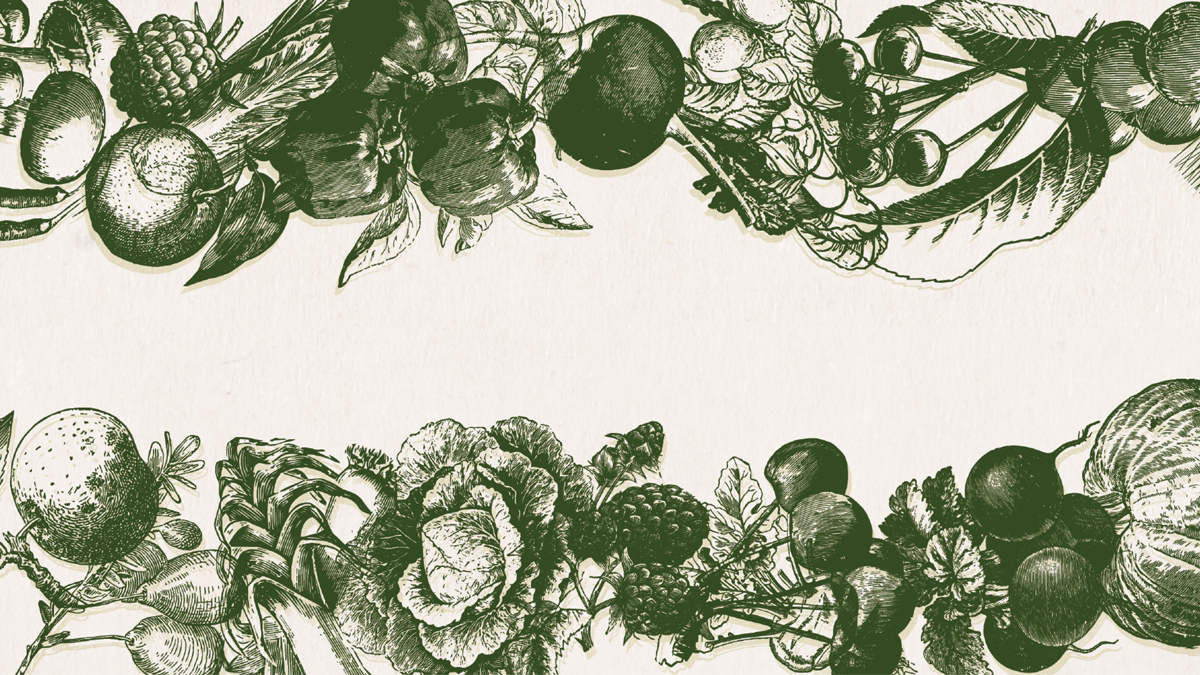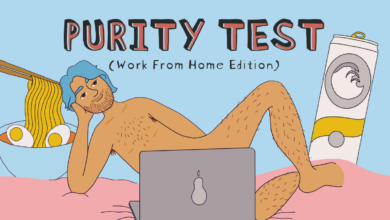Gardens of Green & Gold
 Alex Patterson
Alex PattersonYour Tim Hortons coffee is worth more than $1.70.
On a plantation 6,000 kilometres south of Edmonton, workers spend hours on end picking coffee cherries off trees in Risaralda, Colombia. Because these trees take four years to blossom, each coffee cherry — equivalent to a single coffee bean — will consume about three tonnes of water before it is even harvested. After being picked, cherries are washed and dried, which uses more water. They are then shipped by truck to the Caribbean Sea. Before leaving Colombia, one pound of coffee will generate about four pounds of carbon emissions.
After arriving by boat in North America, that pound of coffee will be transported to a warehouse in Oakville, Ontario, where it will be roasted at 300ºC for several hours, which produces another 10 pounds of CO² emissions. The coffee bean will be driven 3,300 kilometres to Edmonton, and, at the Tim Hortons in CAB, the coffee beans are freshly ground and run through a coffee maker, which adds 11 pounds of emissions.
Whether you savour it for the duration of your morning, or take two sips and toss it in the trash before heading into your 10 a.m. lab, your coffee has consumed at least 25 pounds of CO² emissions, several dozen tonnes of water, and an incalculable amount of energy. But your cup is only a fraction of the massive carbon footprint produced by what Canadian supermarkets and food retailers import.
Coffee will never be a local product to Edmontonians, just like most of the 47,000-or-so products offered at local grocery stores, including bananas from Ecuador, olives from Greece, and blueberries from California. Though Canadians pay a lower percentage of their income for food than citizens in any other country in the world, the price tag comes with an enormous human and environmental cost.
The way our food is grown and harvested continues to decrease the likelihood that it will remain cheap and plentiful for us in the global north. Soil is eroding in all countries in the world at an alarming rate, and within a generation, the demand for fresh water will exceed supply by over 60 per cent. Adding to that is the fact that the food industry is, literally and figuratively, swimming in oil at every stage of production, from fertilizers to farm equipment to distribution to refrigeration. This oil dependency continues to drive conflict worldwide.
Though the kinds of products offered at our grocery stores remain relatively constant throughout the year, food security has increasingly become a major topic of geopolitics. This decade has thus far seen riots in Haiti, Bangladesh, and Egypt as markets were hit with price increases of 130 per cent for wheat, 87 per cent for soy, 74 per cent for rice, and 31 per cent for corn. As the world’s population continues to grow and consume resources faster than they can be replaced, future food shortages and price hikes are inevitable.
But the fight against food scarcity is not just a problem reserved for political science majors. In a recent study by University of Alberta researcher Haoluan Wang, four of the eight “food deserts” in Edmonton — areas which lack easy access to affordable, nutritious food based on proximity to supermarkets — are located in some of Edmonton’s poorest neighborhoods. Not being able to access healthy food is synonymous with nutrition deficiencies, and this serves as a gateway to alternative lifestyles. In Edmonton’s food deserts, you can buy every kind of fast food, malt liquor, illegal drugs, and even semi-automatic weapons, but you’d be hard-pressed to find an organic tomato.
Looking at the big picture, it is clear that we need to change the system that delivers food to our plates three times a day. And for many people at the University of Alberta, the first change we need to make is growing our own food, not just on farms in the countryside, but all over our cities.
The Green and Gold Garden sits on two acres of land beside the environmental sciences facilities at South Campus. As is usual in these gardens, there is someone around who loves to talk, even at 7 a.m. on a Saturday morning. Today, it’s Patti Hartnagel, a retiree who has been volunteering with the Green and Gold Garden since its creation in 2009.
“It’s crucial to support these gardens,” Hartnagel said. “Food sustainability, like water, is the key issue for the future, and if we don’t do something to develop and retain the farmland we have, we’re going to be in real trouble in a few decades.”
“Those $50 Caesar salads in the dead of winter take so much fuel and resources to import, and in our climate, there are so many other possibilities.”
Community gardens aren’t a new phenomenon — they typically emerge in periods when people feel threatened by food insecurity. The Green and Gold Garden is no different: by growing over 60 different vegetables, from staples like potatoes and peas to specialty items like mizuna and Jerusalem artichokes, the garden seeks to bring local produce to Edmonton’s southwest as an alternative to the carbon-heavy methods used by supermarket chains.
But gardens are more than a resource for food production. People embrace community gardens because it gives them a chance to care for something, do something positive, and witness the fruits (or vegetables) of their labor. Even those who can’t provide hands-on help reap the benefits of these gardens: Hartnagel recalled an elderly man who, in the last days of his life, delighted in sitting in the garden and being surrounded by people.
The Green and Gold Garden’s influence extends even further than Edmonton’s city limits. All the proceeds from their Tuesday and Saturday markets go to the Tubahumurize Association in Kigali, Rwanda, which serves over a thousand female survivors of the 1994 genocide. The funds raised by the Green and Gold Garden — which, since 2009, total over $45,000 — help fund trauma counselling, microcredit loans, skills training, and sewing school. Jeanne Mwiliriza, the founder of Tubahumurize, visits the U of A once a year to meet with the volunteers of the Green and Gold Garden.
“Nothing’s free here — every cent goes to the project,” Hartnagel said. “And it’s a grassroots project, it’s not some global agency with a top-down approach.”
“It’s almost like a family connection now. There is accountability, but it’s really a people-to-people network that makes it so special.”
Hartnagel’s biggest worry, given the plans for developing South Campus, is that the garden will soon be turned into a parking lot. Her fear is not unfounded: in the past 40 years, Canada has lost over 5,000 square miles of fertile soil to urban development. The university is under enormous pressure to expand its facilities, and Hartnagel acknowledges that it is difficult for administration to give a nod to urban agricultural users.
But gardens serve a number of purposes, like providing communities vulnerable to mental illness or crime with healthy activities, education, and socialization. Though finding space for community hubs like the Green and Gold Garden is getting easier as their benefits become better known, their futures are always uncertain. It is important to ensure these gardens remain constant forces in their neighbourhoods: without local gardens, we can’t have local food, and the vicious cycle of global food production will continue.
Having grown up in a town in rural Ontario that she describes as “80 people over three trailer parks,” Destyni DeLuca knows that, for many, gardens are the difference between eating and going hungry.
“I grew up doing backyard gardening, and working as a community to make sure all of us got fed,” DeLuca said.
When she came to the U of A, she began volunteering at Sustain SU’s Campus Community Garden, nestled between the dilapidated houses in East Campus Village. For DeLuca, who now works as Sustain SU’s campus garden assistant, working with her hands after spending hours studying is exceptionally therapeutic.
“We get really wrapped up in being our academic best, so to have that time in the garden was a great experience for me,” DeLuca said.
“It’s an incredible atmosphere and an incredible community. People don’t go there and come out feeling any other way.”
Sustain SU’s Campus Community Garden was created together with the Alberta Public Interest Research Group (APIRG) and the Garneau Community Garden in 2003, making it one of the oldest gardens at the U of A. Volunteers, which include students and community members alike, have committed to growing food through organic and sustainable production, without the use of pesticides, chemicals, or genetically modified plants.
But simply having gardens on campuses isn’t enough — if they don’t provide students with fresh food, they serve only a community-building purpose. Because most gardens on campus only start up once the school year had ended, Sustain SU created the university’s first farmers’ market in 2012, which gives more than 20 vendors from around Edmonton — from jewellers to winemakers to apothecaries — the opportunity to sell local food and artisanal products every Thursday of fall and winter semester. Before the market was established, the Office of Sustainability and the Sustainable Food Initiative held irregular fairs throughout the year.
But four years ago, an Agriculture and Resource Economics (AREC) 410 class conducted a study to see if a farmers’ market would be business-feasible at the U of A. The study found the U of A was one of the biggest universities in Canada without a farmers’ market, and that 80 per cent of respondents would be interested in having one at the university.
“The thing (the researchers) cited the most was access to healthy food on campus,” DeLuca said.
“The market really developed in response to that need — the stuff you find at the market would not be available anywhere else on campus.”
To ensure the food sold at the market is locally and sustainably grown, Sustain SU joined the Alberta Farmers’ Market Association, which requires 80 per cent of vendors to make, bake, or grow their products within the province. Since its inception, Sustain SU have always kept their numbers at above 90 per cent.
While the feasibility study conducted by AREC 410 found the majority of respondents would be willing to spend at least $20 at the market, one of the biggest criticisms of retailing local products is the massive gap between hungry people earning a low income and the luxury of local food, which is more expensive than the produce one would find at No Frills. And while Sustain SU’s farmers’ market is among the cheapest in Edmonton, there is much more our university could be doing to ensure all of our students, staff, and faculty have access to fresh, low-cost food.
Changes to unsustainable food systems can come from anywhere. Provinces are the jurisdictions that can make the most difference because they control policy levers that can protect agricultural land. Provinces can also do the most about getting healthy local food to marginalized communities, which saves the public the costs of dealing with malnutrition. When people beset with mental illness, addiction, poverty, and homelessness are fed healthy food, they are less violent, their health improves, their drug use declines, and their pull on emergency health services and court time goes down.
A shortage of local food is the biggest obstacle to improving food security in Alberta and around the world, and developing governmental policies that gives our population access to reliable, diverse sources of affordable food should be our goal. But, ultimately, these changes start with individuals making daily choices that lead to accessible, affordable, healthy, fresh, and sustainable food for all. Many people at the U of A are already taking big steps in combating destructive food systems through the creation of community gardens and farmers’ markets, and as these initiatives grow in size and strength, we will begin to feel their influence beyond the boundaries of our campus.
UPDATE: At 10:30 a.m. on September 25, 2024, the name of the author of this post was removed due to safety concerns. The Gateway appreciates your understanding.




